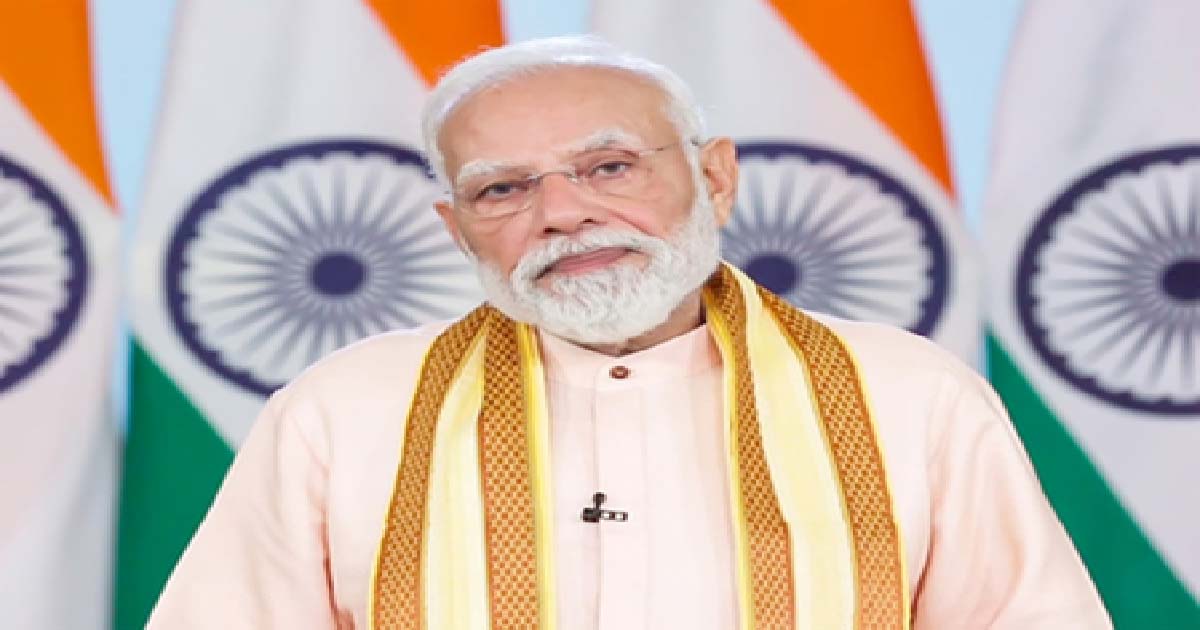Business
Level-playing field between private, public 5G networks absurd: BIF

Amid calls to ensure a level-playing field between public and private 5G networks, Broadband India Forum (BIF) on Tuesday said that such demands are ‘absurd and impractical’ as the two 5G networks are entirely different set of services for two entirely different requirements.
Nowhere in over 55 countries where private 5G networks are deployed have similar regulations been issued, said the think tank, as the two networks are on completely different footings and are not competing with each other.
“Seeking a level-playing field with enterprises for captive private networks is akin to a child in kindergarten being asked to compete with someone who has a doctoral degree. No mature regulator anywhere in the world imposes regulation on a player with no or minimal market share,a said BIF President TV Ramachandran.
Enterprises will not be in the business of selling services or earning revenues through private 5G networks, but only use it for self-consumption.
“The credibility and rationale of such claims are questionable and require introspection,” he said in a statement.
Private 5G networks are about the deployment of high speed, enhanced data capacity, and ultra-low latency applications inside a closed manufacturing unit, hospital, airport, shipping port, among others.
Private 5G networks are single end-user (the enterprise itself) in the given location, unlike a vast number of users in public networks.
In the case of private networks, the quantum of spectrum required is very small (going up to about 100 MHz) unlike the huge amounts of spectrum (almost 72000 MHz) used by public networks.
“While public networks are configured for ‘best effort’ service-level agreements (SLAs) to deliver average performance for external voice and data connectivity, private 5G Networks are meant to serve extremely high reliability and ultra-high SLAs with extremely low latency applications and ultra-high data rates,: the forum argued.
The telcos can operate their networks in full power, whereas private networks have to restrict power to a regulated level just like Wi-Fi networks, to prevent signals spilling out of their premises.
Hence, the same spectrum can be re-used many times across multiple different locations, unlike the case of public 5G networks.
“Private networks are not in the business of selling telecom services and earning revenues from it, but would be using the same purely for self-consumption,” said the forum.
The spectrum that is earmarked for private networks needs to be exclusive and distinct from those bands for Public 5G, to avoid needless possibilities of interference between the two networks.
“Seeking a level playing field with enterprises for captive private networks is akin to a child in kindergarten being asked to compete with someone who has a doctoral degree,” said Ramachandran.
The Union Cabinet last week approved the telecom department’s proposal to conduct 5G spectrum by the end of next month.
The Notice Inviting Applications (NIA) for the spectrum auction permits all the four methods of allocating spectrum for Private 5G Networks as recommended by the Telecom Authority of India (TRAI), including the option of enterprises obtaining spectrum directly from the Department of Telecommunication (DoT).
This provides enterprises the much-required right to develop their private 5G networks based on the specialised requirements for their distinctive captive use.
Leading industry bodies have hailed the TRAI recommendations of around 35-40 per cent cut in the reserve price for 5G spectrum for mobile services, terming it historic and which can finally put India on the world 5G map.
The telecom regulator has put forward a mega auction plan valued at over Rs 7.5 trillion at the base price allocated over 30 years.
Business
IMW 2025: PM Modi to spell out reforms in maritime sector today

Mumbai, Oct 29: Prime Minister Narendra Modi will address the Maritime Leaders Conclave and chair the Global Maritime CEO Forum at India Maritime Week (IMW) 2025, on Wednesday, during which he will spell out the reforms in the maritime sector.
The Global Maritime CEO Forum, the flagship event of IMW 2025, will bring together CEOs of global maritime companies, major investors, policy-makers, innovators, and international partners to deliberate on the future of the global maritime ecosystem. The Forum will serve as a key platform for dialogue on sustainable maritime growth, resilient supply chains, green shipping, and inclusive blue economy strategies.
PM Modi in his post on X on Tuesday said, “Looking forward to being in Mumbai tomorrow, 29th October, to attend programmes relating to the ongoing India Maritime Week 2025. I will speak at the Maritime Leaders Conclave and also chair the Global Maritime CEO Forum. This is a great forum to build collaborations in the maritime sector and highlight India’s reforms in the same.”
The Prime Minister’s participation reflects his deep commitment to an ambitious, future-oriented maritime transformation, aligned with the Maritime Amrit Kaal Vision 2047. This long-term vision, built on four strategic pillars – port-led development, shipping and shipbuilding, seamless logistics, and maritime skill-building – aims to position India among the world’s leading maritime powers.
IMW 2025 serves as the Union government’s premier global platform to translate this vision into action, bringing together leading stakeholders across shipping, ports, shipbuilding, cruise tourism, and blue economy finance, said the government release.
Under the theme ‘Uniting Oceans, One Maritime Vision’, the conclave, which began on October 27, will conclude on October 31. It will showcase India’s strategic roadmap to emerge as a global maritime hub and a leader in the Blue Economy.
IMW 2025 will draw participation from over 85 countries, featuring more than 1,00,000 delegates, 500+ exhibitors and 350+ international speakers.
Meanwhile, Union Minister for Ports, Shipping and Waterways Sarbananda Sonowal on Tuesday said that India’s maritime sector forms the backbone of its economy, with over 95 per cent of the nation’s trade by volume moving through the sea. Under the Net Zero by 2070 commitment, India aims to reduce carbon emissions per ton of cargo by 30 per cent by 2030 and 70 per cent by 2047, making the sector a key driver of climate action.
Minister Sonowal emphasised that flagship initiatives such as the Sagarmala Programme, Maritime India Vision 2030, Harit Sagar Guidelines, and the Maritime Amrit Kaal Vision 2047 place sustainability, innovation, and climate responsibility at the core of India’s maritime growth.
“As we look toward Amrit Kaal 2047, our goal is not only to expand maritime capacity but also to make it greener, smarter, and more resilient,” said Minister Sonowal.
“With our unique geography along key global trade routes, India is poised to become a hub for green shipping corridors, connecting domestic and international markets through clean energy trade,” he added.
India’s first national shore-power standard will enable vessels to draw clean electricity while docked, significantly reducing port-side emissions. Ports like Jawaharlal Nehru Port Authority (JNPA) are leading the shift with battery-powered trucks and electric logistics systems toward zero-emission operations, said the minister.
“The maritime transition cannot be achieved in silos – it demands partnership among governments, industry, financiers, and technology leaders,” Minister Sonowal said.
“Together, we can ensure that the seas that connect us also unite us in purpose – to create a future where maritime trade drives both prosperity and sustainability,” he noted.
Business
India-EU FTA: Brussels delegation in New Delhi next week to achieve ‘constructive conclusion’

New Delhi, Oct 29: To advance the ongoing free trade agreement (FTA) negotiations, the EU technical team, led by Director General for Trade Sabine Weyand, will visit India next week with the objective of achieving a “constructive conclusion based on the potential solutions identified over the past two days”, an official statement said on Wednesday.
Union Commerce and Industry Minister, Piyush Goyal, visited Brussels from October 26-28 and had productive and meaningful engagements with Maros Sefcovic, European Commissioner for Trade and Economic Security and his team on outstanding issues related to the ongoing India-EU FTA negotiations.
“Both sides reaffirmed their shared commitment to conclude the India-EU FTA by the end of 2025, following the clear direction from Prime Minister Shri Narendra Modi and President of the European Commission Ursula von der Leyen during the College of Commissioners’ visit to New Delhi in February 2025,” according to the official statement.
The engagement focused on achieving a mutually beneficial, balanced and equitable trade agreement, reflecting the depth of political trust and the strategic ties between India and the European Union, and at the same time respecting each other’s sensitivities and priorities.
The statement further said that India recognises the importance of ensuring that the FTA remains balanced in addressing both tariff and non-tariff barriers and creating transparent and predictable regulatory frameworks that accelerate trade for both partners in the coming years.
There was intensive engagement to explore possible landing zones on the outstanding issues.
There was also a good discussion on India’s concerns on Non-Tariff Measures and the new EU regulations. During the negotiations, Goyal emphasised the need for preferential treatment for India’s key asks, particularly those with respect to labour-intensive sectors.
Both sides agreed to work closely to finalise the non-sensitive industrial tariff lines. They also agreed that issues related to Steel, Auto, CBAM, and other EU regulations still require further discussion, as these issues have higher sensitivities.
“India looks forward to working closely with the European Union to transform this vision into reality through shared innovation, balanced, equitable, and meaningful trade, and a collective commitment to peace and prosperity,” the statement noted.
Business
Panvel’s Koralwadi Tribals Announce Indefinite Hunger Strike Over Incomplete Road And Water Projects After Being Neglected For Years

Frustrated after years of administrative apathy, tribal residents of Koralwadi in Apta Group Gram Panchayat, Panvel taluka, have announced an indefinite hunger strike outside the Sub-Divisional Officer (SDO) office in Panvel, beginning Wednesday, October 29. The protest aims to demand accountability for substandard road construction and the incomplete Jal Jeevan Mission project.
“Despite being just 15 kilometres from Navi Mumbai, we live as if we are forgotten by the system. We still don’t have a proper road or clean drinking water,” said Gurudas Waghe, a resident of Koralwadi.
Supported by Gram Sanvardhan Samajik Sanstha and guided by social activist Santosh Thakur, villagers have long campaigned for basic infrastructure through rallies, petitions, and previous hunger strikes — all in vain.
After sustained protests, the government sanctioned two major projects — a drinking water supply scheme under Jal Jeevan Mission three years ago and a road connecting NH-17 (Taregav) to Koralwadi two years ago. However, locals allege both projects remain incomplete.
“The contractor completed the roadwork in April, and by May before the rains it was washed away. That’s how poor the construction was,” said one villager, accusing the Public Works Department (PWD) of gross negligence and misuse of funds.
Thakur demanded a vigilance inquiry into the project, alleging that officials are protecting contractors instead of taking corrective action.
Villagers also accused authorities of deliberately stalling the Jal Jeevan Mission scheme. “For three years, they’ve been giving false excuses. We are still waiting for a drop of that promised water,” said another resident.
Under the Katkari Upliftment Programme, several tribal families applied for ration cards and official documents two years ago. However, most still haven’t received them due to alleged negligence by the supply department. “We’ve visited government offices multiple times, but officials keep pushing us away,” villagers complained.
Announcing the protest, Santosh Thakur said, “This time, we will not back down. Until action is taken against negligent engineers and pending works are completed, our hunger strike will continue indefinitely.”
-

 Crime3 years ago
Crime3 years agoClass 10 student jumps to death in Jaipur
-

 Maharashtra1 year ago
Maharashtra1 year agoMumbai Local Train Update: Central Railway’s New Timetable Comes Into Effect; Check Full List Of Revised Timings & Stations
-

 Maharashtra1 year ago
Maharashtra1 year agoMumbai To Go Toll-Free Tonight! Maharashtra Govt Announces Complete Toll Waiver For Light Motor Vehicles At All 5 Entry Points Of City
-

 Maharashtra1 year ago
Maharashtra1 year agoFalse photo of Imtiaz Jaleel’s rally, exposing the fooling conspiracy
-

 National News1 year ago
National News1 year agoMinistry of Railways rolls out Special Drive 4.0 with focus on digitisation, cleanliness, inclusiveness and grievance redressal
-

 Maharashtra12 months ago
Maharashtra12 months agoMaharashtra Elections 2024: Mumbai Metro & BEST Services Extended Till Midnight On Voting Day
-

 National News1 year ago
National News1 year agoJ&K: 4 Jawans Killed, 28 Injured After Bus Carrying BSF Personnel For Poll Duty Falls Into Gorge In Budgam; Terrifying Visuals Surface
-

 Crime1 year ago
Crime1 year agoBaba Siddique Murder: Mumbai Police Unable To Get Lawrence Bishnoi Custody Due To Home Ministry Order, Says Report












